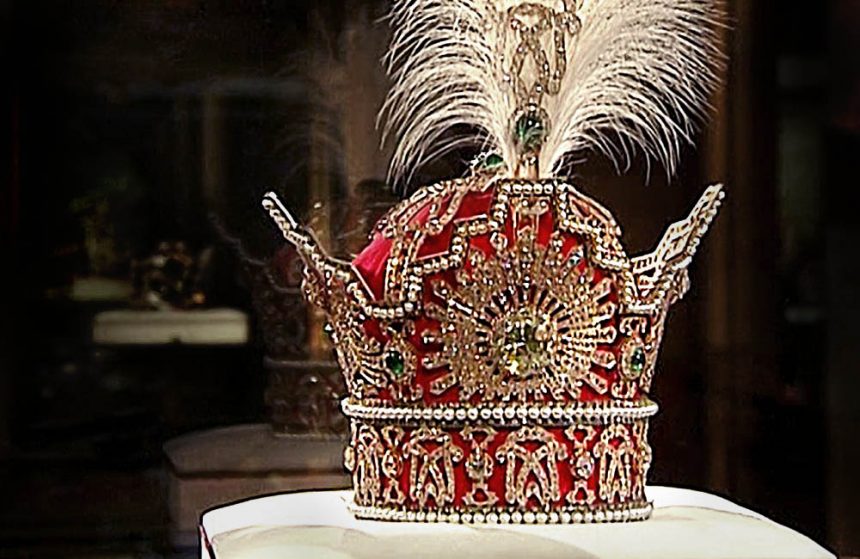The famous ‘X’ does indeed mark this very spot in Tehran, Iran; The Treasury of National Jewels which is also known as Jewelry Museum, is the home of the world’s most valuable collection of jewelry. Comprised of many centuries worth of royal gems and treasures, this collection is immensely high in monetary value. So much so that it is actually a reserve backing the national currency! The high profile collection, due to its tremendous value, cannot be housed in a regular museum building. Instead, it is held a giant heavy-vault in the Central Bank of Iran’s main building in Tehran. Come along with goingIRAN to learn and discover more about this attraction!
In this case, all that glitters is not gold; it is also diamonds, rubies, emeralds and any other kind of extraordinary gems you can ponder of! The majority of the items in this collection date back to the Safavid Dynasty of the 15th – 17th centuries. For centuries, the Shahs went around Europe, India and the Ottoman Empire collecting treasures to decorate their lush capital, Isfahan. As imagined, sustaining this amassed giant collection of treasures did not come as an easy task. After the fall of Shah Soltan Hosein (also spelt Sultan Husayn & Soltan Hosayn) and the Safavid Empire the jewels became a great spoil of war. Mahmud Afghan invaded and took all of it back to India with him in 1722. Over a decade later, as Nader Shah Afshar came into power, he sent courtiers to India with a request for the return of the jewels. After three years of his negotiations not being taken seriously, Nader Shah sent a sizable army to India. Subsequently, in order to be relieved of the soldiers’ threat, Mohammed Shah of India was forced to give back the most valuable pieces of the collection. This included the Darya-e Nur and Kuh-e Nur (world’s largest cut diamond) diamonds, a Peacock Throne and various other treasures. The value of the collection being moved around at the time was estimated to be around $16.75 Billion USD.
After Nader Shah’s murder in 1747, the colonial British managed to snag the giant diamond and have held it in their possession since, locked up in the Tower of London. However all is not lost. Still, many of the antiquated pieces remain in the Iranian vault, including the Darya-e Nur pink diamond; said to be the biggest uncut diamond in the world. After all of the raiding and invasions, the Qajar and Pahlavi rulers began enthusiastically adding to the collection during the 18th and 19th centuries. It was around the 1930’s that the collection was transferred to the Central Bank of Iran. Due to the immense volume of the gems and treasures and their uniqueness, the collection today does not even have estimated value. Among some of the most eye catching items, visitors can find multiple royal jewel incrusted crowns, a 34kg gold globe of jewels (adorned with 51,366 precious stones; emeralds making the seas and diamonds and rubies making the countries), many gem covered swords and much more!
The Treasury of National Jewels is probably the most popular museum that is visited by foreign tourists and travelers. When in Tehran, absolutely do not miss out on being a firsthand witness to the amazing splendor of these legendary works of craftsmanship and artistry. Observe the bittersweet history that lays behind each piece of treasure; gifted or forcefully taken by the mighty Imperial rulers of the past! Just as a heads-up, the treasury is only open from Saturday to Tuesday from 2:00 – 4:30pm only. Tours in English, French, German and Arabic are available and included in the entrance fee. See you there!
City/Town: Tehran
Street Address: The National Jewelry Treasury, Central Bank of I.R. Iran, No. 213, Ferdowsi Ave.
Telephone: (+98-21) 6446 3785
Website: http://www.cbi.ir/page/1397.aspx
Operating Days: Saturday to Tuesday (Under 12 years old not allowed.)
Operating Hours: 2 pm – 4:30 pm
Typical Price: 200.000 Rils.
Neighbourhood: National museum (Iran Bastan) – Post museum – Sardar-e Bagh-e Meli – Naderi Café – Ebrat Museum – Ferdowsi Hotel


